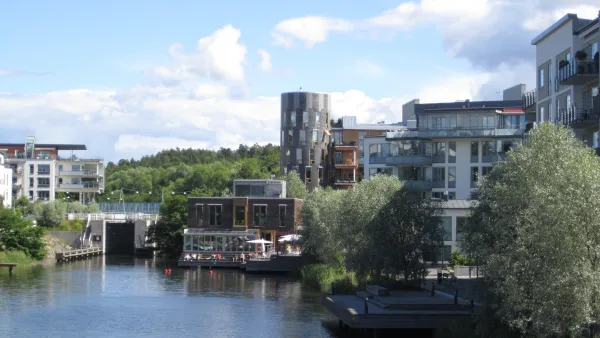The historic Fort Mason, along with several other development projects, has helped alter the landscape of the city’s northern waterfront, according to Jim Chappell, former head of the San Francisco Planning and Urban Research Association.
While development in the aftermath of the Loma Prieta earthquake and the decimation of the double-decker Embarcadero Freeway have helped to transform San Francisco’s northern waterfront, work on the historic Fort Mason Center project has been slow going.
Jim Chappell, an architect and planner who led the San Francisco Planning and Urban Research Association (SPUR) for 15 years, describes several developments that are reshaping the area and discusses how the Fort Mason project is finally gaining ground.
“For years, it has all fallen apart when one hits Van Ness. But a brilliant new plan for the non-profit Fort Mason Center is about to change all that.”
The National Park Service owns the Fort Mason property. New development on the site includes the opening this week of the reconceived Pier 2, a 35,000-square foot, $21 million project, Chappell writes. This follows a $13 million pier substructure upgrade the park service completed.
The changes were ushered in the 2012 International Design Competition in which 20 firms were invited to submit entries for revamping Fort Mason, according to Chappell.
For years, the nonprofit foundation that runs the historic Fort Mason helped to preserve some of the cultural institutions.
“But like every other real estate venture, the world has changed for Fort Mason since September 15, 2008. The National Park Service is squeezed for resources; the non-profit tenants have always been; and Fort Mason is searching for new ways to meet its mission of supporting arts and culture in San Francisco. Thus the design competition. The competition brief called for visions to “inject cohesion, focus, and renewed energy into the campus” and “enhance Fort Mason Center’s profile as an arts and cultural destination.”
Visit Urbdezine to read more.
FULL STORY: Completing San Francisco’s Northern Waterfront

National Parks Layoffs Will Cause Communities to Lose Billions
Thousands of essential park workers were laid off this week, just before the busy spring break season.

Retro-silient?: America’s First “Eco-burb,” The Woodlands Turns 50
A master-planned community north of Houston offers lessons on green infrastructure and resilient design, but falls short of its founder’s lofty affordability and walkability goals.

Delivering for America Plan Will Downgrade Mail Service in at Least 49.5 Percent of Zip Codes
Republican and Democrat lawmakers criticize the plan for its disproportionate negative impact on rural communities.

Test News Post 1
This is a summary

Test News Headline 46
Test for the image on the front page.

Balancing Bombs and Butterflies: How the National Guard Protects a Rare Species
The National Guard at Fort Indiantown Gap uses GIS technology and land management strategies to balance military training with conservation efforts, ensuring the survival of the rare eastern regal fritillary butterfly.
Urban Design for Planners 1: Software Tools
This six-course series explores essential urban design concepts using open source software and equips planners with the tools they need to participate fully in the urban design process.
Planning for Universal Design
Learn the tools for implementing Universal Design in planning regulations.
EMC Planning Group, Inc.
Planetizen
Planetizen
Mpact (formerly Rail~Volution)
Great Falls Development Authority, Inc.
HUDs Office of Policy Development and Research
NYU Wagner Graduate School of Public Service




























